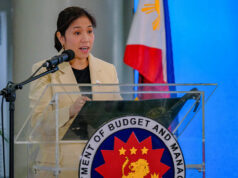Peso extends climb vs dollar

THE PESO strengthened further against the dollar on Thursday as market players awaited the policy decision of the local central bank.
The local unit ended Thursday’s session at P52.805 versus the greenback, 28.5 centavos stronger than the P53.09-per-dollar finish the previous day.
The peso traded stronger the whole day, opening the session at P52.98 per dollar. Its intraday high stood at P52.80, while its worst showing for the day was at P53 against the US currency.
Dollars traded rose to $799.3 million from the $731.5 million that exchanged hands on Wednesday.
The Bangko Sentral ng Pilipinas raised its benchmark rates by 25 basis points (bp) yesterday as inflation expectations remain elevated.
Inflation was at 6.7% in October, the same pace as the previous month but surging from 3.1% a year ago.
Another trader added that the stronger peso yesterday “was in anticipation for the BSP rate hike.”
However, Michael L. Ricafort, economist at Rizal Commercial Banking Corp., said the market was divided on the policy rate decision.
“The [25-bp] rate hike came as a surprise for some, thereby turned out positive for the peso,” Mr. Ricafort said in a text message.
Aside from this, he added that the peso strengthened as global oil prices lingered at near one-year lows.
For Friday, Mr. Ricafort expects the peso to move between P52.50 and P52.80 against the dollar, while the first trader gave a P52.60-P52.80 range.
“Moving forward, we will continue to see [stronger] range as the BSP raised rates by 25 bps,” the second trader noted, giving a P52-P52.70 range for today.
Meanwhile, Asian currencies firmed on Thursday on news that China has delivered a written response to US trade demands, raising hopes the two sides will begin negotiations to bring an end to their trade war.
The Korean won led gainers after Reuters reported China had responded to US demands for wide-ranging trade reforms, citing three US government sources.
The positive sentiment was also aided by a softer greenback, as the dollar index reacted to rallies in the euro and sterling, which together constitute around 70% of the weight in the index. — K.A.N. Vidal with Reuters



